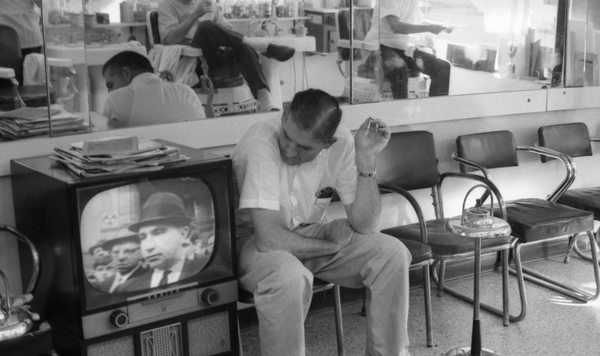
This week’s episode of The Secret Life of Machines goes just a little meta–the television series examines the history and development of television itself. This episode marks the end of the first series of the program from Channel 4, which is also 1/3 of the way through the original three-year run of the show.
Hosts Tim Hunkin and Rex Garrod jump directly into the science of television, illustrating the basic components (a circuit board and a cathode ray tube) with a television set cut in two so that the inner workings are visible. The “history” portion of this episode passes somewhat more quickly than in previous shows, focusing mainly on the accidental discovery of the effect of light on the resistance of selenium (that link is partially in French; original English article at bottom of linked page) which, while not terribly practical for most purposes, nonetheless proved that light could, in fact, interact with electricity. From that, Hunkin examines the early competing efforts of Scottish inventor John Baird, who developed a mechanical image transmission system, and Vladimir Zworykin, whose electronic transmission system ultimately evolved into modern television technology.
As part of the discussion of television components, Hunkin further dissects a cathode ray tube and explains the wire mesh and phosphors that compose the picture on the surface of the tube, both with a large-scale model and via an animation sequence. Garrod demonstrates a plasma lamp he constructed from discarded television parts and offers a quick overview of printed circuitry. Hunkin also explains basic electronic components, including resistors, diodes, capacitors, and transistors. Stay tuned until the end for a flaming TV tower.

Love the photo. I love the early technology even more. It amazes me how seemingly random discoveries progress into the modern tech we have today. It also scares me that the only modern invention I’ve seen is Nicki Minaj and twerking. I’m afraid to see what that gets turned into.
So… I just had a mental image of how Tim Hunkin might animate Nicki Minaj twerking, and I laughed out loud at my desk. Actually the twerk is well-suited for his graphic style. And that, I strongly suspect, is the first time the phrase “the twerk is well-suited…” has ever appeared in print.